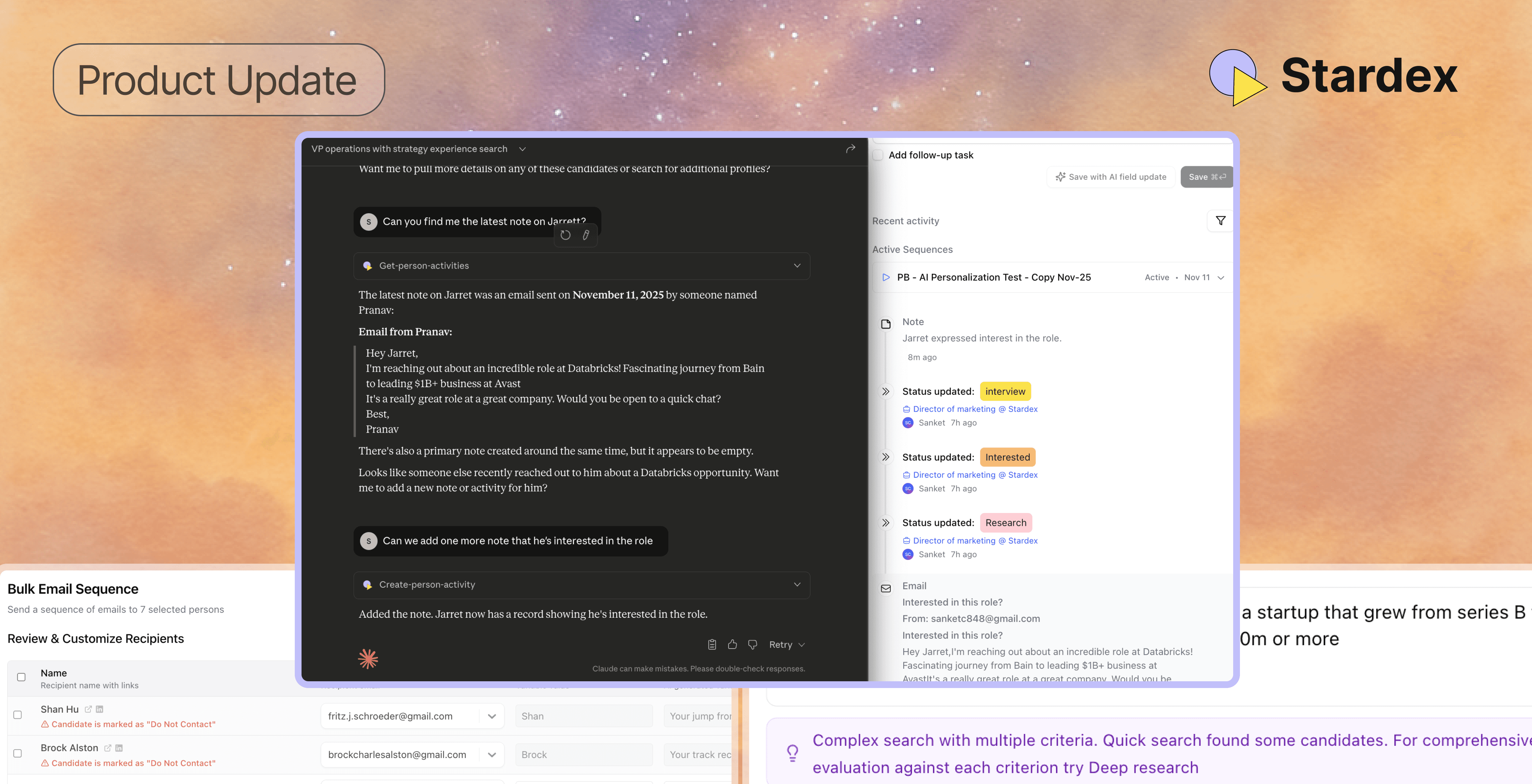You Already Know Lots of the Best Candidates, Look in your Database
Jun 14, 2025
Imagine a recruiting firm launching a global search to fill a VP role. They spend weeks looking, and in the end, they discover that the best candidate is just 10 miles from their office and was already sitting in their system the whole time.
Sounds like an outlier? Not really. It happens all the time.
With so many tools and platforms out there, it's easy to get caught up chasing new leads. But what about the people you've already spoken to? How about the ones in your ATS, spreadsheets, or even your email?
The problem is most firms don't realize just how valuable their database is.
Finding New People Isn't Always the Answer
Most recruiters spend a lot of time sourcing net-new candidates. But the real win? Knowing how to use what you've already got. Your existing database holds serious value, whether it's your ATS, CRM, or LinkedIn connections.
You've built connections, held interviews, and saved notes, but if your system makes it hard to find these people later or worse, you forget about them, you will likely do way more work than necessary.
3 Common Ways Recruiting Firms Waste Their Database
1. Failing to Calibrate Early with What You Already Have
Some recruiters go straight to their database, which makes sense since you have already screened these candidates. But clients sometimes see that as too "safe" and worry you're just reusing old contacts. So, others do the opposite: starting from scratch with fresh LinkedIn searches and custom lists. It looks thorough but time-consuming and can ignore people you've already connected with.
Then there's the "top company" approach, focusing only on candidates from well-known companies. But what if your best fit isn't on that list? What if they're already in your system, but your tools make it hard to find them?
That's why the best recruiters don't rely on just one method, they use all of them. But even the best strategy falls flat if your database isn't searchable and easy to filter.
Having a clean, searchable system doesn’t just save time, it helps you calibrate early with your client and pitch your services. Calibration helps you align with what the client is really looking for before you spend hours chasing the wrong profiles. You do this by showing them an initial shortlist of candidates from your existing database; not as final picks, but as starting points. You’re essentially asking: “Are these the kinds of people you want to see?”
However, calibration only works if you can actually find those sample candidates. If your system is messy or hard to search, the most relevant profiles stay buried and so does your head start.
2. Still Doing Everything Manually (Even With AI Tools)
Some recruiters get stuck in the same manual routine again and again. They type in the job title, set filters, scroll through LinkedIn, copy names into a spreadsheet, and then repeat the whole process every time the role reopens like a never-ending loop of manual work.
The frustrating part? Many of the best candidates have already been in touch. They've interviewed, maybe even reached the final round. But their information is buried in old notes, outdated spreadsheets, or a complicated ATS, so they're overlooked.
The problem isn't a lack of talent but the lack of the right tools. Instead of tapping into their existing database, recruiters often start from scratch because they don't have a system that makes past interview notes easy to search and keep organized. This leads to teams wasting hours on manual searches.
There’s almost always a few potentially great fits sitting right there in your system already, but without investing in the right search tools, they remain hidden.
3. When Changing Criteria Leaves Great Candidates Behind
Another common trap? Losing track of great candidates when the client changes what they want.
What if your next great hire isn't someone new but someone you've already talked to? Maybe someone applied a year ago or had a great screening call months back. Then the job description changes, and suddenly, they're the perfect guy for the role.
Let's say you're hiring a marketing director. At first, the client wants someone with agency experience. But after a few interviews, they decide they want someone who's led an in-house team instead. If your ATS can't quickly search and filter through past candidates, you might miss people you've already talked to who now match the new criteria.
How Stardex Helps You Use the Data You Already Have
The best candidates aren't always brand new but are often the ones you've already spoken to. Without the right tools, they get buried in spreadsheets, outdated systems, or messy notes.
So, we built Stardex to fix that.
As an AI-native ATS, Stardex helps you unlock the full value of your existing database. It keeps candidate records updated automatically, enriches company data for a candidate’s work experiences, makes past interview notes easy to search, and adapts to your changing hiring needs so you're not starting from scratch every time.
With Stardex, your database becomes a smart assistant, not just a junk drawer.
Ready to Find Your Next Superstar with Stardex?
If you’re a recruiting firm spending thousands on AI sourcing tools but still doing the manual heavy lifting, it’s time to switch things up.
Stardex AI is your smart recruitment assistant, helping you unlock the full potential of your existing database so you can focus on what matters—building relationships and closing great hires.
Book a demo today and discover how Stardex AI, an AI-powered tool built for recruiters, can help you find your next superstar.




